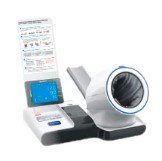Laboratory Tests for Identifying Clostridium difficile in Stool Samples during a Phlebotomy Procedure in the United States
Summary
- Clostridium difficile is a common cause of infectious diarrhea in the United States
- Laboratory tests used to identify C. difficile in stool samples include PCR, enzyme immunoassays, and culture
- Proper collection and handling of stool samples are crucial for accurate Test Results
Introduction
Clostridium difficile, also known as C. difficile, is a bacterium that can cause infectious diarrhea. In the United States, C. difficile infection is a significant healthcare-associated infection that poses a challenge to healthcare facilities. Rapid and accurate identification of C. difficile is crucial for appropriate patient management. Laboratory tests play a crucial role in the diagnosis of C. difficile infection, particularly in stool samples collected during a phlebotomy procedure. In this article, we will explore the specific laboratory tests typically used to identify C. difficile in stool samples during a phlebotomy procedure in the United States.
Laboratory Tests for Identifying Clostridium difficile
Polymerase Chain Reaction (PCR)
PCR is a molecular technique used to amplify DNA sequences specific to C. difficile. PCR tests are highly sensitive and specific for detecting the presence of C. difficile in stool samples. The turnaround time for PCR tests is relatively quick, making them a valuable tool in diagnosing C. difficile infection. PCR tests can detect the toxin genes produced by C. difficile, such as toxin A (tcdA) and toxin B (tcdB).
Enzyme Immunoassays
Enzyme immunoassays (EIAs) are commonly used in clinical laboratories to detect C. difficile toxins in stool samples. These tests detect the presence of toxins produced by C. difficile, including toxins A and B. EIAs are relatively rapid and inexpensive compared to other laboratory tests, making them a popular choice for diagnosing C. difficile infection.
Culture
Culture is a traditional method of identifying C. difficile in stool samples. In this method, stool samples are cultured on selective media that promote the growth of C. difficile bacteria. Once the bacteria grow, they can be identified using various laboratory techniques, such as microscopy and biochemical tests. While culture is not as rapid as PCR or EIAs, it is still considered a valuable tool in the diagnosis of C. difficile infection.
Collection and Handling of Stool Samples
Proper collection and handling of stool samples are essential for accurate Test Results when identifying C. difficile. Here are some key points to consider:
- Use a clean, leak-proof container to collect the stool sample
- Avoid contaminating the sample with urine or water
- Label the sample correctly with the patient's information
- Transport the sample to the laboratory as soon as possible
- Inform the laboratory if the patient has recently taken antibiotics, as this may affect Test Results
Conclusion
Identifying Clostridium difficile in stool samples during a phlebotomy procedure is crucial for the timely diagnosis and management of C. difficile infection. PCR, enzyme immunoassays, and culture are commonly used laboratory tests for detecting C. difficile in stool samples. Proper collection and handling of stool samples are essential to ensure accurate Test Results. By following the recommended guidelines for specimen collection and choosing the appropriate laboratory test, Healthcare Providers can effectively diagnose and treat C. difficile infection in patients.

Disclaimer: The content provided on this blog is for informational purposes only, reflecting the personal opinions and insights of the author(s) on the topics. The information provided should not be used for diagnosing or treating a health problem or disease, and those seeking personal medical advice should consult with a licensed physician. Always seek the advice of your doctor or other qualified health provider regarding a medical condition. Never disregard professional medical advice or delay in seeking it because of something you have read on this website. If you think you may have a medical emergency, call 911 or go to the nearest emergency room immediately. No physician-patient relationship is created by this web site or its use. No contributors to this web site make any representations, express or implied, with respect to the information provided herein or to its use. While we strive to share accurate and up-to-date information, we cannot guarantee the completeness, reliability, or accuracy of the content. The blog may also include links to external websites and resources for the convenience of our readers. Please note that linking to other sites does not imply endorsement of their content, practices, or services by us. Readers should use their discretion and judgment while exploring any external links and resources mentioned on this blog.
